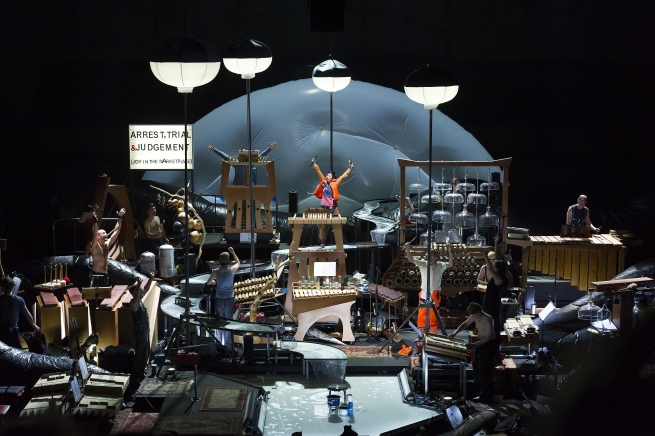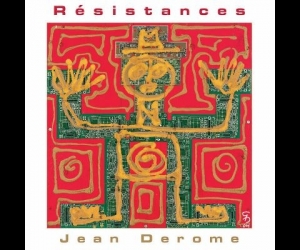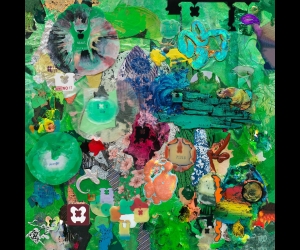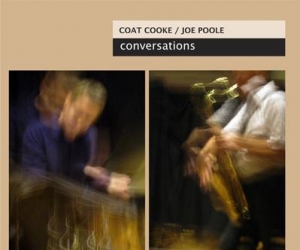
A resonant boom rippling through your body—that is the impact of the Marimba Eroica, arguably the lowest-pitched percussion instrument in existence. Four thick slabs of wood up to eight feet long—each placed over a sizable resonator—make you feel rather than hear its monumental presence. It is one of the twenty-five-odd instruments built by composer Harry Partch (1901–1974) to be used in music he created according to a system of just intonation. The full effect of the Marimba Eroica can only be enjoyed in live performances, which are extremely rare because Partch’s custom-made instruments don’t travel well: musicians have to learn how to play them, and then rehearse the music.
The staging of Partch’s last large-scale work, the theatre piece Delusion of the Fury, at the 2013 Ruhrtriennale was an extraordinary occasion. Replicas of Partch’s instruments had been constructed under the supervision of the German percussionist and instrument builder Thomas Meixner. Ensemble musikFabrik had taken a year to prepare for this European première. Because of the modest and uneven volume of the various instruments, they were individually miked and amplified, resulting in an overall sound of detailed transparency.
Witnessing the work Partch subtitled as a “ritual of dream and delusion” unfold live was indeed memorable. In the opening instrumental music “Exordium,” tinkling waves of arpeggios from the zither-like Harmonic Canon, with its delicate plucked and hammered strings and tuned percussion, drew listeners into a microtonal sound world. Sustained chords and tones came from two harmoniums, capable of producing intensely dense microtonal clusters. And there was the Eroica’s reverberant boom. The visual presence of the instruments was in itself a momentous experience.
In Delusion of the Fury, Partch juxtaposes two tales about the futility of anger—one based on a Japanese Noh drama, the other on a comic folk tale from Ethiopia. In the course of the fourteen component compositions, the musicians are called upon to sing, act, and dance—an egalitarian, multidisciplinary approach emphasizing the ritual aspect of the proceedings. Unfortunately, not all the solo voices in Ensemble musikFabrik’s performance were up to the task. The protagonist of “Time of Fun Together,” who leads the chorus in rapturous song and dance, fell far short of expectations. In the original performances of the work a guest singer performed the soprano parts; although this revival was truer to Partch’s original concept, it was actually less convincing.
Some interventions by director Heiner Goebbels were questionable. Dressing the musicians as outcasts suited both the quirky music and the raw, industrial character of this huge former factory hall. But having a Justice of the Peace portrayed by a large mask resembling KFC’s trademark Colonel Sanders sent a message against consumerism and capitalism that felt at odds with Partch’s intentions, even if it drew giggles from the audience. And what made Goebbels decide to progressively hide the instruments behind big black slowly-inflating sacks is beyond comprehension.
Still, all in all, this was an invigorating experience—not least for having music literally ripple through your body. Repeat performances of this production happen March 28 and 29, 2014 at Festival Archipel, Geneva; June 10–12, 2014 in the Holland Festival, Amsterdam; and July 24–26, 2014 in the Lincoln Center Festival, New York.
Image: Ensemble musicFabrik in a final dress rehearsal of Delusion of the Fury in August 2013. Photo by: Wonge Bergmann.


